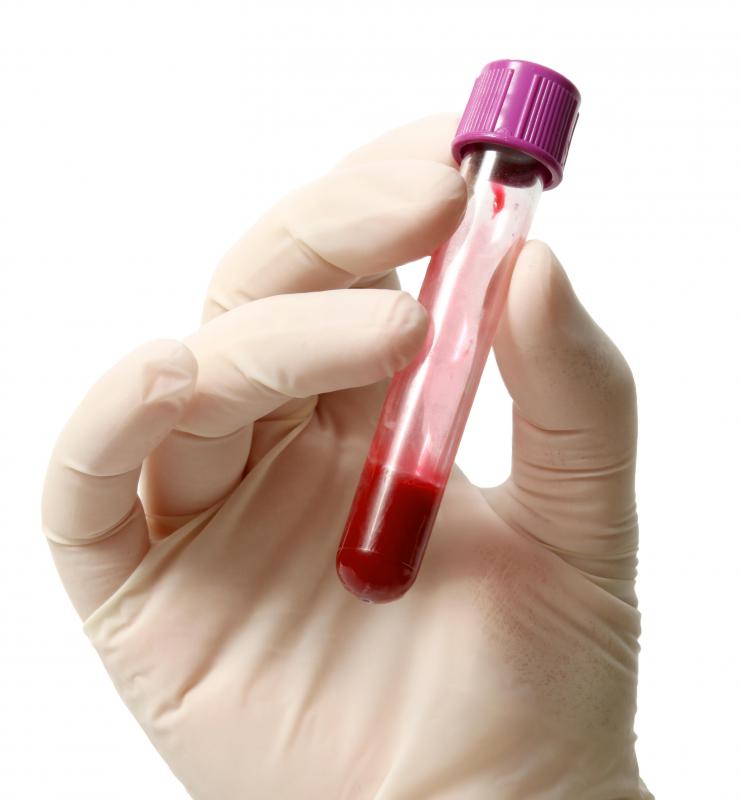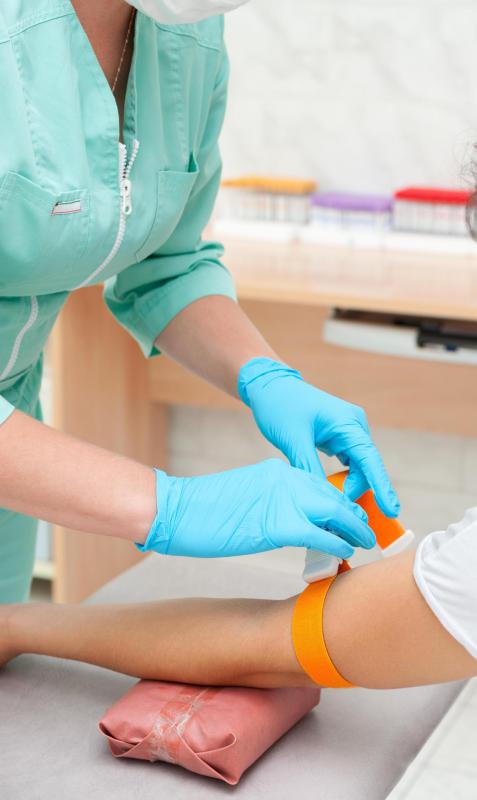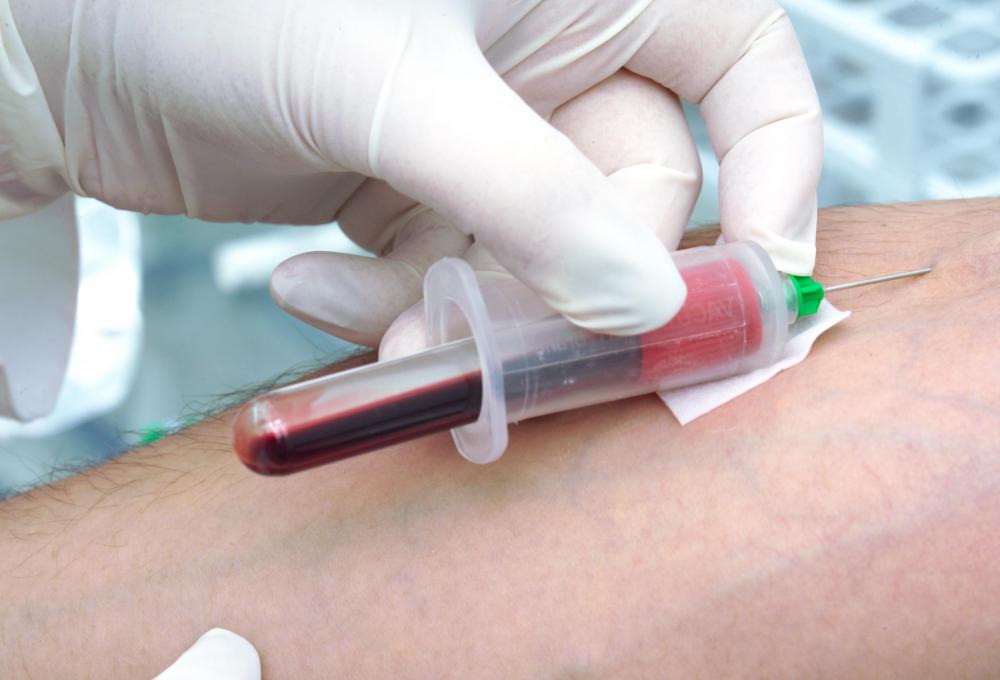At WiseGEEK, we're committed to delivering accurate, trustworthy information. Our expert-authored content is rigorously fact-checked and sourced from credible authorities. Discover how we uphold the highest standards in providing you with reliable knowledge.
What Happens During a Venesection?
Venesection, or phlebotomy, is the procedure for accessing the vein to remove blood for medicinal reasons. Some people with abnormally high iron levels in the blood, a condition called haemachromatosis, may be advised to undergo venesection one to three times a week to treat the condition. Polycynthaemia, and condition where there are too many cells in the blood, may necessitate the removal of some blood to improve circulation issues. The process requires an intravenous (IV) line to be inserted and less than a half an hour of time.
At the beginning of the venesection, the patient will be asked to bare his arm. A tourniquet is wrapped around the upper arm, enabling blood to collect below the tourniquet. The additional blood volume causes the veins to swell, making the insertion of the needle into the vein easier. After the IV line is inserted, the tourniquet may be removed and the patient is asked to make a fist.

During the venesection, blood flows through the IV tubing into a collection bag. The amount of blood removed from the body is carefully measured to ensure that only a therapeutic amount is drained. Removing more blood than recommended does not double the beneficial properties of venesection, and will likely cause adverse health effects.
After the proper amount of blood is removed, which normally takes less than 30 minutes, the IV needle will be withdrawn from the arm. The patient may need to put pressure on the spot for two to three minutes until any bleeding that may occur has stopped. A bandage will be placed over the area to prevent infection.

Isovolmic venesection is the procedure done for patients with low blood pressure. Before the blood is removed from the body, fluid has to be added to the circulatory system to raise the blood volume, which will raise blood pressure. An IV line will be started and a set amount of fluid is administered. After the blood pressure reading is favorable, the IV line will be removed from the arm and inserted into the other arm for blood collection.

Observation after the venesection is usually required. During this time, the patient’s blood pressure and other vital signs will be recorded. A small snack and beverage may be supplied to offset any nausea or dizziness that may occur after the blood is removed. Once any bleeding has subsided and vital signs are normal, the patient will be allowed to leave.
AS FEATURED ON:
AS FEATURED ON:














Discuss this Article
Post your comments